Developmental biology is the study of the process by which animals and plants grow and develop. Developmental biology also encompasses the biology of regeneration, asexual reproduction, metamorphosis, and the growth and differentiation of stem cells in the adult organism.

A planarian is one of the many flatworms of the traditional class Turbellaria. It usually describes free-living flatworms of the order Tricladida (triclads), although this common name is also used for a wide number of free-living platyhelminthes. Planaria are common to many parts of the world, living in both saltwater and freshwater ponds and rivers. Some species are terrestrial and are found under logs, in or on the soil, and on plants in humid areas.
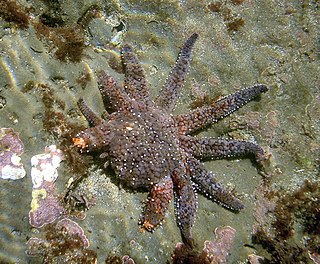
In biology, regeneration is the process of renewal, restoration, and tissue growth that makes genomes, cells, organisms, and ecosystems resilient to natural fluctuations or events that cause disturbance or damage. Every species is capable of regeneration, from bacteria to humans. Regeneration can either be complete where the new tissue is the same as the lost tissue, or incomplete after which the necrotic tissue becomes fibrosis.
Morphallaxis is the regeneration of specific tissue in a variety of organisms due to loss or death of the existing tissue. The word comes from the Greek allazein, (αλλάζειν) which means to change.

A blastema is a mass of cells capable of growth and regeneration into organs or body parts. The changing definition of the word "blastema" has been reviewed by Holland (2021). A broad survey of how blastema has been used over time brings to light a somewhat involved history. The word entered the biomedical vocabulary in 1799 to designate a sinister acellular slime that was the starting point for the growth of cancers, themselves, at the time, thought to be acellular, as reviewed by Hajdu. Then, during the early nineteenth century, the definition broadened to include growth zones in healthy, normally developing plant and animal embryos. Contemporaneously, cancer specialists dropped the term from their vocabulary, perhaps because they felt a term connoting a state of health and normalcy was not appropriate for describing a pathological condition. During the middle decades of the nineteenth century, Schleiden and Schwann proposed the cell theory, and Remak and Virchow insisted that cells can only be generated by division of existing ones. Consequently, the conception of the blastema changed from acellular to cellular. More specifically, the term came to designate a population of embryonic cells that gave rise to a particular tissue. In short, the term blastema started being used to refer to what modern embryologists increasingly began calling a rudiment or Anlage. Importantly, the term blastema did not yet refer to a mass of undifferentiated-looking cells that accumulates relatively early in a regenerating body part. For instance, Morgan (1900), does not use the term even once in his classic book, “Regeneration.” It was not until the eve of World War 1 that Fritsch introduced the term blastema in the modern sense, as now used by contemporary students of regeneration. Currently, the old usage of blastema to refer to a normal embryological rudiment has largely disappeared.
Hox genes, a subset of homeobox genes, are a group of related genes that specify regions of the body plan of an embryo along the head-tail axis of animals. Hox proteins encode and specify the characteristics of 'position', ensuring that the correct structures form in the correct places of the body. For example, Hox genes in insects specify which appendages form on a segment, and Hox genes in vertebrates specify the types and shape of vertebrae that will form. In segmented animals, Hox proteins thus confer segmental or positional identity, but do not form the actual segments themselves.
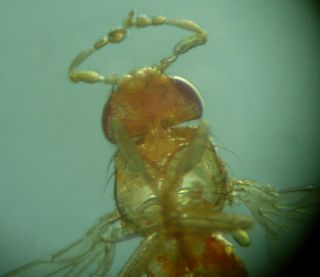
Antennapedia is a Hox gene first discovered in Drosophila which controls the formation of legs during development. Loss-of-function mutations in the regulatory region of this gene result in the development of the second leg pair into ectopic antennae. By contrast gain-of-function alleles convert antennae into ectopic legs.

Limb development in vertebrates is an area of active research in both developmental and evolutionary biology, with much of the latter work focused on the transition from fin to limb.
The limb bud is a structure formed early in vertebrate limb development. As a result of interactions between the ectoderm and underlying mesoderm, formation occurs roughly around the fourth week of development. In the development of the human embryo the upper limb bud appears in the third week and the lower limb bud appears four days later.

Fibroblast growth factor 10 is a protein that in humans is encoded by the FGF10 gene.
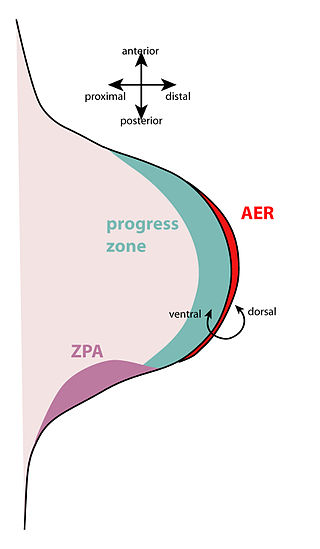
The zone of polarizing activity (ZPA) is an area of mesenchyme that contains signals which instruct the developing limb bud to form along the anterior/posterior axis. Limb bud is undifferentiated mesenchyme enclosed by an ectoderm covering. Eventually, the limb bud develops into bones, tendons, muscles and joints. Limb bud development relies not only on the ZPA, but also many different genes, signals, and a unique region of ectoderm called the apical ectodermal ridge (AER). Research by Saunders and Gasseling in 1948 identified the AER and its subsequent involvement in proximal distal outgrowth. Twenty years later, the same group did transplantation studies in chick limb bud and identified the ZPA. It wasn't until 1993 that Todt and Fallon showed that the AER and ZPA are dependent on each other.
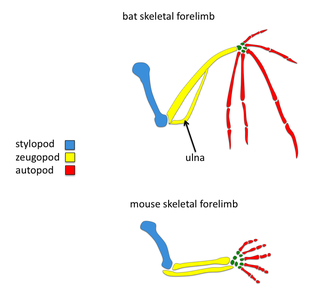
The order Chiroptera, comprising all bats, has evolved the unique mammalian adaptation of flight. Bat wings are modified tetrapod forelimbs. Because bats are mammals, the skeletal structures in their wings are morphologically homologous to the skeletal components found in other tetrapod forelimbs. Through adaptive evolution these structures in bats have undergone many morphological changes, such as webbed digits, elongation of the forelimb, and reduction in bone thickness. Recently, there have been comparative studies of mouse and bat forelimb development to understand the genetic basis of morphological evolution. Consequently, the bat wing is a valuable evo-devo model for studying the evolution of vertebrate limb diversity.
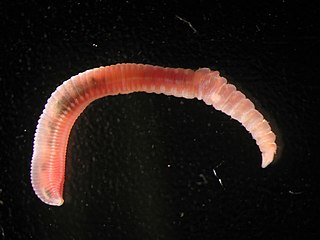
Capitella teleta is a small, cosmopolitan, segmented annelid worm. It is a well-studied invertebrate, which has been cultured for use in laboratories for over 30 years. C. teleta is the first marine polychaete to have its genome sequenced.

Elizabeth Dexter "Betty" Hay was an American cell and developmental biologist. She was best known for her research in limb regeneration, the role of the extracellular matrix (ECM) in cell differentiation, and epithelial-mesenchymal transitions (EMT). Hay led many research teams in discovering new findings in these related fields, which led her to obtain several high honors and awards for her work. Hay primarily worked with amphibians during her years of limb regeneration work and then moved onto avian epithelia for research on the ECM and EMT. Hay was thrilled by the introduction of transmission electron microscopy (TEM) during her lifetime, which aided her in many of her findings throughout her career. Moreover, Hay was a huge advocate of women in science during her lifetime.

Hox genes play a massive role in some amphibians and reptiles in their ability to regenerate lost limbs, especially HoxA and HoxD genes.
Scar free healing is the process by which significant injuries can heal without permanent damage to the tissue the injury has affected. In most healing, scars form due to the fibrosis and wound contraction, however in scar free healing, tissue is completely regenerated. During the 1990s, published research on the subject increased; it is a relatively recent term in the literature. Scar free healing occurs in foetal life but the ability progressively diminishes into adulthood. In other animals such as amphibians, however, tissue regeneration occurs, for example as skin regeneration in the adult axolotl.

Starfish, or sea stars, are radially symmetrical, star-shaped organisms of the phylum Echinodermata and the class Asteroidea. Aside from their distinguished shape, starfish are most recognized for their remarkable ability to regenerate, or regrow, arms and, in some cases, entire bodies. While most species require the central body to be intact in order to regenerate arms, a few tropical species can grow an entirely new starfish from just a portion of a severed limb. Starfish regeneration across species follows a common three-phase model and can take up to a year or longer to complete. Though regeneration is used to recover limbs eaten or removed by predators, starfish are also capable of autotomizing and regenerating limbs to evade predators and reproduce.
Dedifferentiation is a transient process by which cells become less specialized and return to an earlier cell state within the same lineage. This suggests an increase in cell potency, meaning that, following dedifferentiation, a cell may possess the ability to re-differentiate into more cell types than it did prior to dedifferentiation. This is in contrast to differentiation, where differences in gene expression, morphology, or physiology arise in a cell, making its function increasingly specialized.

Neoblasts (ˈniːəʊˌblæst) are non-differentiated cells found in flatworms called planarians. Neoblasts make up about 30 percent of all cells in planaria. Neoblasts give planarians an extraordinary ability to regenerate lost body parts. A planarian split lengthwise or crosswise will regenerate into two separate individuals.
Immune system contribution to regeneration of tissues generally involves specific cellular components, transcription of a wide variety of genes, morphogenesis, epithelia renewal and proliferation of damaged cell types. However, current knowledge reveals more and more studies about immune system influence that cannot be omitted. As the immune system exhibits inhibitory or inflammatory functions during regeneration, the therapies are focused on either stopping these processes or control the immune cells setting in a regenerative way, suggesting that interplay between damaged tissue and immune system response must be well-balanced. Recent studies provide evidence that immune components are required not only after body injury but also in homeostasis or senescent cells replacement.













